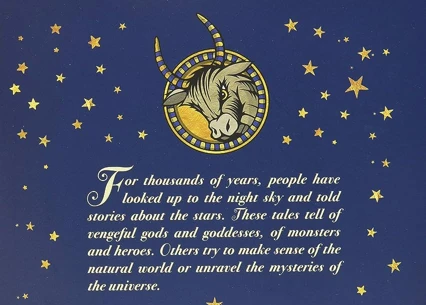Have you ever gazed up at the night sky and wondered about the stories written in the stars? Constellations, those dazzling patterns that grace our celestial canvas, have captivated humanity for thousands of years with their beauty and mystery. In this article, we will delve into the origins of constellations, exploring how ancient civilizations like the Greeks and Babylonians first mapped out these cosmic formations. We will also unveil the mythical tales behind some of the most famous constellations, including the eternal rivalry of Orion and Scorpius, the love story of Perseus and Andromeda, and the bond between Ursa Major and Ursa Minor. We will journey across different cultures, discovering the unique interpretations and stories associated with constellations around the world. Lastly, we will explore the scientific aspect of constellations, from the role of astronomy and observation to the naming and cataloguing of these stellar arrangements. So, grab your telescope and get ready to embark on a celestial adventure where the stars come alive with tales of gods, heroes, and the wonders of the universe.
The Origins of Constellations
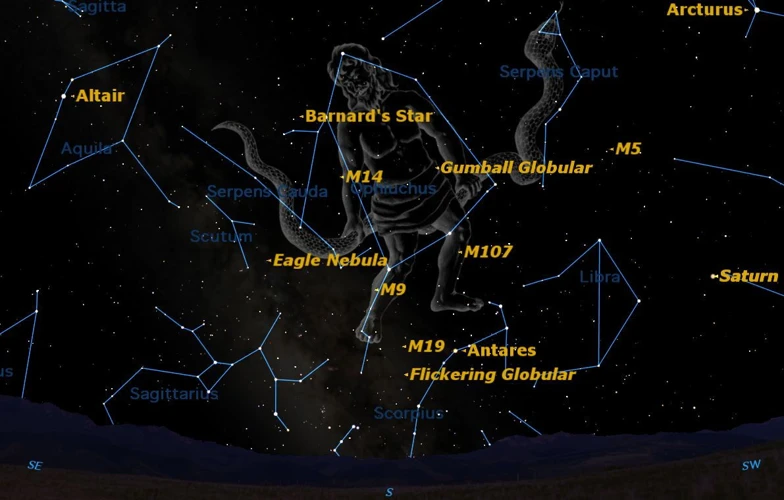
The origins of constellations trace back to ancient civilizations, namely the Greeks and Babylonians, who sought to make sense of the vastness of the night sky. The Greeks were some of the first to create a systematic map of the stars, with early astronomers like Hipparchus and Ptolemy developing the concept of constellations to organize and navigate the heavens. The Babylonians, on the other hand, viewed constellations as divine messages, linking them to their religious beliefs and celestial omens. These early interpretations laid the foundation for the rich tapestry of constellations we know today. To learn more about the role of mapping constellations, the astronomical significance, and the mythological origins, check out the fascinating articles on science mapping constellations, the role of constellations in astronomy, and the mythological origins of constellations.
The Ancient Greeks and Babylonians
The Ancient Greeks and Babylonians played a pivotal role in the development of constellations as a means to understand and navigate the night sky. The Greeks, known for their advancements in astronomy, began systematically mapping the stars around 600 BCE. Influential figures like Hipparchus and Ptolemy created catalogs of stars, marking them into meaningful patterns known as constellations. These constellation patterns were based on mythological figures, heroes, and animals, connecting the celestial realm with earthly tales.
At the same time, in ancient Mesopotamia, the Babylonians had their own system of mapping the stars. They believed that the arrangement of stars in the sky held important omens and messages from the gods. The Babylonians created zodiac constellations, dividing the ecliptic (the apparent path of the Sun across the sky) into twelve equal parts. Each zodiac constellation corresponded to a different month, with its position in the sky determining astrological predictions and events.
Over time, the Greek and Babylonian practices merged, influencing each other’s understanding of constellations. Greek constellations became predominantly accepted in the Western world, while Babylonian observations and interpretations shaped the foundation for astrology.
The contributions of the Ancient Greeks and Babylonians in mapping and interpreting constellations laid the groundwork for future civilizations to expand upon and explore. Their combined legacy not only enriched our understanding of the night sky but also kindled our imagination, connecting us to the stories written in the stars.
Cultural Interpretations
Cultural interpretations of constellations have varied greatly across different societies and civilizations throughout history. Each culture has demonstrated their unique perspectives and myths associated with the celestial patterns. In ancient Greek culture, constellations were often linked to their mythology and stories of gods and heroes. For example, the constellation Orion represents the mighty hunter, while Cassiopeia symbolizes the queen who was punished by the gods.
Similarly, in Chinese culture, constellations hold deep-rooted significance. The Chinese zodiac, based on animals, is closely intertwined with their constellations. The constellation known as the Big Dipper is associated with the legendary emperor, and the Ox constellation represents hard work and perseverance.
In Native American cultures, constellations were often utilized as a way to pass down stories and traditions through generations. Different tribes have their own interpretations, such as the Navajo’s belief that the Pleiades constellation represents a group of elder sisters guiding and protecting their people.
These cultural interpretations showcase the diverse ways in which constellations have been understood and appreciated worldwide. By exploring these cultural narratives, we not only gain insight into ancient beliefs and traditions, but we also deepen our understanding of the universal human connection to the stars above.
The Mythical Tales Behind the Stars
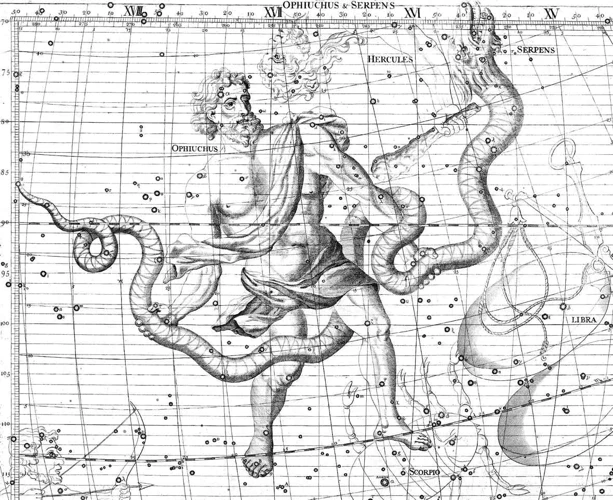
The night sky is not only a mesmerizing display of twinkling stars but also a stage for ancient mythical tales that have been passed down through generations. Among the many captivating stories, a few stand out. One such tale is the eternal rivalry between Orion and Scorpius, represented as constellations locked in an eternal chase across the sky, the hunter and the scorpion forever engaged in a cosmic battle. Ursa Major and Ursa Minor, also known as the Great Bear and the Little Bear, tell a different story, a tale of a mother bear and her cub who were transformed into constellations to escape the wrath of a vengeful hunter. Perhaps one of the most famous love stories written in the stars belongs to Perseus and Andromeda, a tale of heroic rescue and enduring love that spans the vastness of the night sky. These mythical narratives not only add a touch of magic but remind us that the stars are not just celestial objects, but characters in a tapestry of captivating legends.
Orion and Scorpius: Eternal Rivals
Orion and Scorpius, two prominent constellations in the night sky, have been locked in an eternal rivalry for centuries, captivating the imaginations of stargazers around the world. In Greek mythology, this rivalry has its roots in a tragic tale involving the hunter Orion and the scorpion Scorpius. According to the myth, Orion boasted of his hunting prowess, claiming that no creature on Earth could defeat him. Enraged by his arrogance, the goddess Gaia sent a giant scorpion to challenge Orion. A fierce battle ensued between the two formidable foes, their clash shaking the heavens and earning them a place among the stars. Today, we can observe their eternal rivalry whenever they are both visible in the night sky, with Orion positioned in the winter sky and Scorpius in the summer sky (in the northern hemisphere). As one rises, the other sets, symbolizing their perpetual struggle for dominance. The placement of their constellations also creates the illusion that Scorpius is chasing Orion across the sky, forever chasing but never able to catch his rival. This celestial rivalry serves as a reminder of the consequences of hubris and the eternal cycles of life and death. So, next time you gaze at the stars, look for the mighty hunter Orion and the elusive scorpion Scorpius, forever locked in their celestial battle above us.
Ursa Major and Ursa Minor: The Great Bear and the Little Bear
Ursa Major and Ursa Minor are two of the most well-known and easily recognizable constellations in the night sky. The names of these constellations originate from Greek mythology, specifically from the story of Callisto, a beautiful nymph who caught the eye of Zeus, the king of the gods. Zeus transformed himself into a bear to approach Callisto, but Hera, Zeus’ jealous wife, discovered their affair and turned Callisto into a bear as punishment. Zeus, unable to reverse the transformation, instead placed Callisto and their son Arcas in the sky as constellations.
Ursa Major, also known as the Great Bear, represents Callisto, while Ursa Minor, or the Little Bear, symbolizes Arcas. Ursa Major is characterized by its distinct shape resembling a bear, with the stars forming the bear’s head, body, and tail. The most recognizable feature of Ursa Major is the Big Dipper, a prominent asterism within the constellation. The Big Dipper consists of seven stars that form a ladle or plow shape, and it has been traditionally used as a navigational tool for centuries.
Ursa Minor, on the other hand, is a smaller constellation located near Ursa Major. Its most famous feature is the North Star, also known as Polaris, which sits at the end of the constellation’s handle. Polaris has long been used as a guide for navigation, as it remains almost stationary in the sky while the other stars appear to revolve around it.
The mythological tale of Ursa Major and Ursa Minor reminds us of the power of love, the consequences of jealousy, and the enduring presence of these celestial beings in our collective imagination. Whether you’re stargazing on a clear night or just appreciating the beauty of the night sky, Ursa Major and Ursa Minor stand as a testament to the timeless stories written in the stars.
Perseus and Andromeda: A Love Across the Sky
Perseus and Andromeda: A Love Across the Sky
Perseus and Andromeda is a captivating love story that unfolds in the constellations above us. In Greek mythology, Andromeda was a princess who was destined to be sacrificed to a sea monster as punishment for her mother’s arrogance. However, Perseus, a brave hero, came to her rescue. With the help of the winged sandals from Hermes, the reflective shield from Athena, and a sword gifted by Zeus, Perseus defeated the fearsome creature and saved Andromeda.
Today, these characters are immortalized in the night sky as constellations. Perseus can be identified by his shining sword, which is formed by a group of stars known as Alpha Persei Cluster. Andromeda herself is represented by a graceful chain of stars that spans a vast area of the sky. The centerpiece of her constellation is the Andromeda Galaxy, the closest spiral galaxy to our own Milky Way.
The story of Perseus and Andromeda serves as a reminder of the power of love and heroism. It reminds us that even in the vastness of the cosmos, tales of bravery and devotion have found their place. As we gaze at their constellations above, we can’t help but be inspired by the enduring love that transcends time and space.
To learn more about the fascinating tales of constellations and their mythological origins, don’t miss out on our articles on the enduring rivalry of Orion and Scorpius, the bond between Ursa Major and Ursa Minor, and the rich cultural interpretations of constellations around the world.
Constellations in Different Cultures
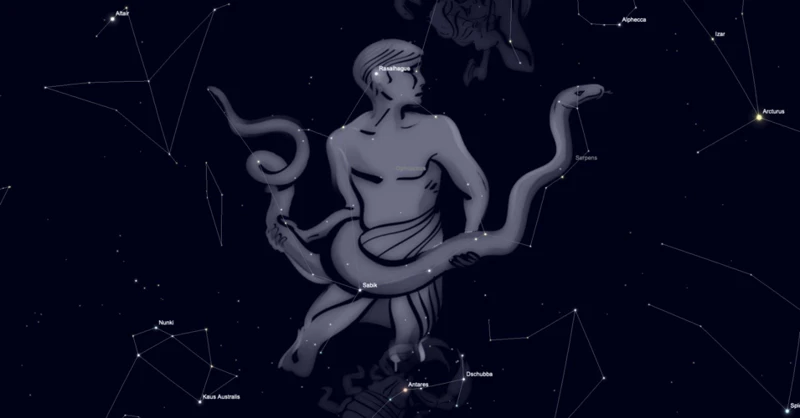
Constellations have not only captivated the imagination of the Greeks and Babylonians, but they also hold great significance in different cultures around the world. In China, the skies are adorned with their own set of constellations, steeped in legends and folklore. These Chinese constellations tell stories of mythical creatures, emperors, and ancient heroes. Similarly, the Egyptians associated constellations with their gods and pharaohs, intertwining celestial and earthly powers. Indigenous cultures, such as the Native Americans and the Aboriginal people of Australia, have their own unique constellations, which reflect their deep connection to nature and ancestors. These diverse interpretations and stories behind constellations highlight the universal appeal and cultural significance of these celestial patterns. Whether you explore the Chinese constellations, the Egyptian tales, or the indigenous folklore, you will discover a rich tapestry of stories that connect humanity to the cosmic wonders of the night sky.
Chinese Constellations: Legends from the East
Chinese Constellations, also known as “Legends from the East,” offer a unique and captivating perspective on the cosmos. Dating back thousands of years, Chinese astronomers and storytellers developed their own constellations based on their rich mythology and cultural beliefs. These constellations often depict legendary figures and creatures from Chinese folklore. Here are some of the notable Chinese constellations:
1. The Azure Dragon (Qing Long): Representing power and good fortune, the Azure Dragon is one of the Four Symbols of the Chinese constellations. This celestial creature is associated with the east and embodies the concept of renewal and growth.
2. The Vermilion Bird (Zhu Que): Symbolizing fire and passion, the Vermilion Bird is another member of the Four Symbols. It is often associated with the south and is believed to bring joy, prosperity, and harmony.
3. The White Tiger (Bai Hu): The White Tiger, also part of the Four Symbols, embodies strength and protection. It is associated with the west and is believed to ward off evil spirits.
4. The Black Tortoise (Xuan Wu): Completing the quartet of the Four Symbols, the Black Tortoise symbolizes wisdom and longevity. It represents the north and is often associated with water and winter.
5. The Cowherd and the Weaver (Niulang and Zhinü): This constellation tells the timeless love story between a cowherd and a weaver girl, who are represented by stars Altair and Vega respectively. They are separated by the Milky Way and can only meet once a year on the Chinese Qixi Festival.
These are just a few examples of the many fascinating Chinese constellations that are part of their rich cultural heritage. They demonstrate the connection between the heavens and earthly legends, providing a glimpse into the imaginative and poetic nature of Chinese cosmology.
Egyptian Constellations: Stories of Gods and Pharaohs
In Egyptian mythology, the stars and constellations held great significance as they were believed to be intricately linked to the gods and pharaohs. Each celestial arrangement told a story of divine power and cosmic alignment. One prominent constellation in Egyptian culture was Orion, which represented Osiris, the god of the afterlife and resurrection. According to the myth, Osiris, after being killed by his brother Set, was resurrected and became the ruler of the underworld. This resurrection narrative aligned with the annual flooding of the Nile, symbolizing the renewal and rebirth of life in Egyptian society.
Another notable constellation was Sirius, the brightest star in the night sky. Known as the “Dog Star,” Sirius represented the goddess Isis, the mother and protector of pharaohs. It was believed that the rise of Sirius in the predawn sky marked the beginning of the flooding season of the Nile. This annual event was seen as a sign of Isis’ blessings and the fertility it brought to the land.
The constellation of Draco, the dragon, also held significance in Egyptian mythology. In Egyptian belief, Draco represented the serpent god Apep, the embodiment of chaos and destruction. Apep was thought to threaten the sun god Ra on his daily journey across the sky. The successful defeat of Apep by Ra each day symbolized the triumph of order over chaos, ensuring the continuity of life and the preservation of Ma’at, the concept of balance and harmony.
To navigate their way through the night sky and honor their gods, the ancient Egyptians developed a celestial tool called the Decans. These were groupings of stars that encompassed thirty-six individual constellations, each associated with a different deity or concept. The Decans were used for timekeeping and predicting the future, such as determining favorable or unfavorable conditions for various activities or events.
The Egyptian constellations not only served religious and mythological purposes but also played a practical role in the daily lives of the people. Farmers used the constellations to guide them in planting and harvesting crops, as well as determining the seasons. The knowledge of the stars was passed down through generations, ensuring the continuation of this celestial tradition.
As we explore the captivating tales of Egyptian constellations, we gain a deeper understanding of the ancient Egyptian culture and their intricate connection to the celestial realm. These stories of gods and pharaohs, woven among the stars, have left an indelible mark on human history and continue to inspire awe and fascination to this day.
Indigenous Constellations: Tales of Ancestors and Nature
Indigenous constellations offer a unique and deeply spiritual perspective on the stars. For many indigenous cultures around the world, the night sky is not just a celestial canvas but a sacred map passed down through generations, filled with stories of their ancestors and the natural world around them. These constellations often depict animals, plants, and natural phenomena, weaving together a narrative that celebrates the interconnectedness between humans and nature. One example is the Inca constellation of the Llama, representing the sacred animal that played a vital role in their daily lives. In Australia, the Aboriginal people have their own rich celestial lore, with constellations like the Emu in the Sky, which traces the dark spaces in the Milky Way as the outline of an emu. These indigenous constellations not only served as navigational guides but also as a way to preserve cultural heritage and pass down wisdom from one generation to the next. They reflect a profound reverence for the natural world and the belief that the stars are a source of guidance, knowledge, and spiritual connection. To explore more about indigenous constellations and their captivating tales of ancestors and nature, read the enlightening articles on Indigenous Constellations: Tales of Ancestors and Nature.
The Scientific Side of Constellations
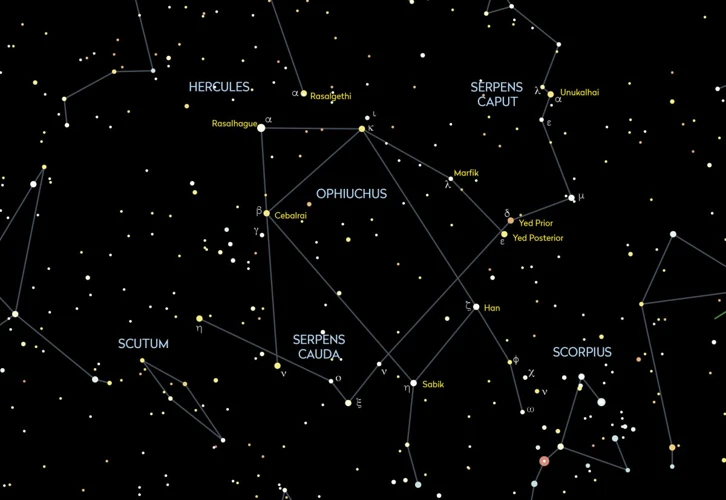
The scientific side of constellations encompasses two key aspects: astronomy and observation, and constellation naming and cataloguing. In the field of astronomy, constellations serve as valuable tools for studying celestial objects and mapping the night sky. Astronomers rely on constellations to locate specific stars, galaxies, and other astronomical phenomena. Observation is crucial in understanding the behavior and movements of celestial bodies, as well as tracking changes over time. Additionally, constellation naming and cataloguing ensure that the vast array of stars and formations are organized and classified for easy reference. This process involves assigning names to stars within constellations and cataloguing them based on their celestial coordinates. To delve deeper into the scientific realm of constellations, explore articles that delve into the intricacies of astronomy and observation as well as the fascinating world of constellation naming and cataloguing.
Astronomy and Observation
Astronomy and Observation play a crucial role in understanding and studying constellations. Through careful observation of the night sky, astronomers have been able to identify and track the movements of celestial objects, including stars, planets, and galaxies. By studying the patterns of constellations, astronomers can gather valuable data about the universe, such as its structure, composition, and evolution. They use sophisticated telescopes, both ground-based and space-based, to observe the stars and their interactions. These observations are conducted across different wavelengths of light, ranging from radio waves to gamma rays, providing a comprehensive understanding of the cosmic objects within constellations. Additionally, modern technologies, such as astrophotography and spectroscopy, allow astronomers to capture detailed images and analyze the composition of stars and galaxies within constellations. The data collected through these observations contribute to our understanding of the universe and aid in advancing our knowledge of astrophysics and cosmology.
Constellation Naming and Cataloguing
Constellation naming and cataloguing is a crucial aspect of astronomy that allows scientists to organize and classify the vast number of constellations in the night sky. The process of naming constellations primarily involves assigning official names to specific groupings of stars based on their patterns and shapes. These names often reflect the cultural, mythological, or historical significance associated with the respective constellations. For example, the constellation Orion is named after the mythical Greek hunter, while Ursa Major and Ursa Minor are named after the Great Bear and the Little Bear, respectively.
To ensure uniformity and clarity in identifying constellations, various cataloguing systems have been developed throughout history. One of the most widely used and recognized catalogues is the Messier Catalogue, created by astronomer Charles Messier in the 18th century. This catalogue primarily lists nebulae, star clusters, and galaxies but also includes some notable constellations. Another renowned catalogue is the International Astronomical Union (IAU) constellation boundaries, which defines the precise boundaries and names of constellations.
In addition to the official naming and cataloguing systems, astronomers also rely on celestial coordinates to precisely locate and identify constellations. The two main systems used for this purpose are the equatorial coordinate system and the ecliptic coordinate system. The equatorial coordinate system utilizes declination and right ascension to pinpoint positions, while the ecliptic coordinate system is based on the position of the Sun relative to Earth’s orbit.
Constellation naming and cataloguing play a crucial role in facilitating communication and understanding among astronomers worldwide. The assigned names and cataloguing systems help astronomers identify, study, and share information about specific constellations, allowing for a more comprehensive exploration of the night sky.
Exploring Constellations Today
Today, exploring constellations is a popular pastime for stargazers of all ages. With the advancements in technology and accessibility, anyone can embark on their own cosmic journey. From the comfort of your backyard or a dark-sky location, you can witness the wonders of the night sky. Popular constellations such as Orion, Leo, and the Big Dipper grace the celestial sphere, captivating our imaginations. To make the most of your stargazing experience, it’s essential to familiarize yourself with the night sky and learn to identify these radiant patterns. By using star charts, mobile apps, or even a simple planisphere, you can navigate the heavens and discover the many constellations that adorn the celestial tapestry. Embrace the night, escape the city lights, and let the stars guide your journey into the enchanting realm of the cosmos.
Popular Constellations in the Night Sky
Popular constellations in the night sky have long fascinated stargazers and amateur astronomers alike. These celestial formations capture our imagination and provide a sense of wonder as we gaze up at the twinkling stars. Some of the most well-known constellations include Ursa Major, also known as the Big Dipper or the Plough, which is easily recognizable with its distinctive shape of a ladle or saucepan. Ursa Major is often used as a navigational tool to find the North Star, Polaris. Another prominent constellation is Orion, the hunter, which dominates the winter sky with its three bright stars forming the hunter’s belt. The constellation also showcases the brilliant stars Betelgeuse and Rigel. The constellation Cassiopeia, shaped like a W or M, is prominent in the northern hemisphere and is often associated with the story of a vain queen in Greek mythology. Other popular constellations include Draco, the dragon, Cygnus, the swan, and Leo, the lion. These captivating formations serve as recognizable landmarks in the vast night sky and provide a sense of awe and inspiration for those who love exploring the cosmos. Whether you’re a seasoned astronomer or a casual observer, the popular constellations in the night sky offer a captivating glimpse into the beauty and mysteries of the universe.
Stargazing Tips and Techniques
Stargazing is a magical experience that allows us to connect with the wonders of the universe. To make the most out of your stargazing adventure, here are some helpful tips and techniques. Firstly, find a location away from city lights and light pollution for optimal visibility. Look for open areas with clear horizons and minimal obstruction. A telescope or a pair of binoculars can enhance your stargazing experience, but they are not essential. Start by familiarizing yourself with prominent constellations like Orion, Ursa Major, and Cassiopeia. These easily recognizable formations can serve as anchor points for navigating the night sky. Consider using a stargazing app or sky maps to help identify constellations, stars, and planets. It’s also essential to be patient and allow your eyes to adjust to the darkness. Avoid looking at bright lights, including your phone or flashlight, as it can impair your night vision. Dress warmly and comfortably, as stargazing can be a chilly endeavor. Lastly, stay aware of the weather conditions and choose clear, cloudless nights for the best visibility. So, grab a cozy blanket, lay back, and allow the wonders of the cosmos to unfold above you. Happy stargazing!
Conclusion
In conclusion, exploring the enchanting realm of constellations offers us a glimpse into the ancient wisdom, myths, and scientific discoveries embedded in the starry tapestry of the night sky. The origins of constellations can be traced back to the enduring legacies of civilizations like the Greeks, Babylonians, and various cultures around the world. These celestial patterns have served as guides for navigation, sources of inspiration for captivating myths and legends, and windows into the vastness of the universe. Through the wonders of astronomy and observation, constellations continue to capture our imagination and expand our understanding of the cosmos. As we gaze up at the sparkling heavens, let us remember that the stories written in the stars are a testament to our human desire to unravel the mysteries of the universe and connect with something greater than ourselves. So, whether we are stargazing enthusiasts, history buffs, or simply curious souls, let us continue to marvel at the celestial wonders above and find solace in the ethereal narratives of constellations.
Frequently Asked Questions
How did ancient civilizations identify and name constellations?
Ancient civilizations identified and named constellations based on patterns they observed in the night sky. They often associated these patterns with mythological figures, animals, or objects that held cultural significance. The names of constellations were passed down through generations, with each civilization adding their own interpretations and stories.
Were constellations used for navigation in ancient times?
Yes, constellations played a crucial role in navigation for ancient civilizations. By observing the positions of specific constellations, sailors and travelers could determine their location and navigate across land and sea. Constellations provided them with a celestial map to guide their journeys.
Why do constellations appear to move across the sky throughout the night?
The apparent movement of constellations across the night sky is a result of the Earth’s rotation. As the Earth spins on its axis, different constellations become visible at different times. This rotation gives the illusion of constellations moving across the sky throughout the night.
Are constellations visible from both hemispheres?
No, not all constellations are visible from both hemispheres. Some constellations are only visible from the northern hemisphere, while others are only visible from the southern hemisphere. However, there are a few constellations that can be seen from both hemispheres, such as Orion and Ursa Major.
How many officially recognized constellations are there?
There are a total of 88 officially recognized constellations. These constellations were established by the International Astronomical Union (IAU) to help astronomers and stargazers navigate and communicate about the night sky.
Do constellations change over time?
Constellations themselves do not change over time, as they are based on fixed patterns of stars. However, the positions of constellations may appear to shift slightly over thousands of years due to a phenomenon known as precession, which is caused by the Earth’s wobbling rotation.
What is the significance of the zodiac constellations?
The zodiac constellations are a special group of constellations that lie along the ecliptic, the apparent path of the Sun across the sky. These constellations are associated with the twelve astrological signs and hold cultural and astrological significance in determining one’s personality traits based on their birth date.
How did indigenous cultures interpret constellations?
Indigenous cultures around the world interpreted constellations in unique ways. They often wove their own stories and legends around the patterns of stars, connecting them to their cultural beliefs, creation myths, and teachings about the natural world. These interpretations varied greatly across different indigenous cultures.
Can constellations be seen in daylight?
While constellations are most commonly observed at night, it is technically possible to see some bright constellations during daylight hours. However, the brightness of the Sun makes it difficult to discern the fainter stars that make up most constellations. Nighttime provides the best conditions for stargazing and observing constellations.
How are modern constellations named?
Modern constellations are typically named after characters and figures from mythology, historical figures, or objects of scientific significance. The naming of constellations often involves a collaborative process between astronomers and cultural experts to ensure that the names reflect both scientific and cultural relevance.

